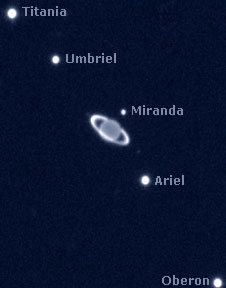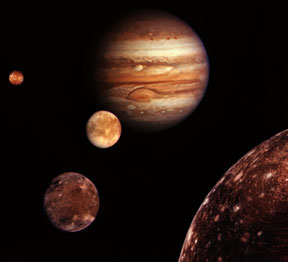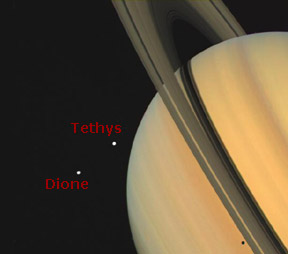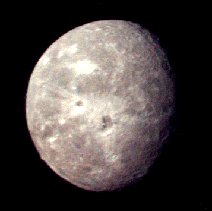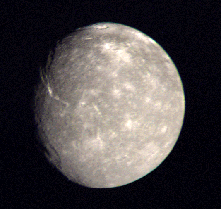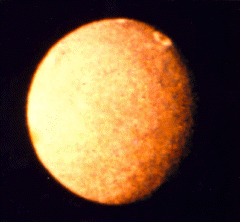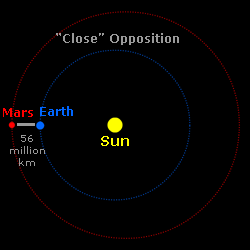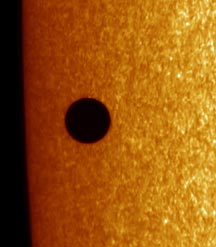Click on image for full size
Image courtesy European Southern Observatory.
New Moons of Uranus and Neptune
News story originally written on October 31, 2003
Astronomers have discovered new moons orbiting Uranus and Neptune. 2003 has been a banner year for moon discoveries; several new moons orbiting Jupiter, Saturn, and Neptune were announced earlier this year. All of the newfound moons are small, having diameters less than 100 km (60 miles).
Mark Showalter of Stanford University and NASA's Ames Research Center and Jack Lissauer of Ames discovered two new moons of Uranus that have been given the temporary names S/2003 U1 and S/2003 U2. At the time of their discovery in September, the two were the smallest moons yet found orbiting Uranus, having diameters of 16 km (12 miles) and 12 km (8 miles) respectively. The moons, which were discovered via observations made with the Hubble Space Telescope, both orbit closer to the planet than Uranus's five large moons (Ariel, Miranda, Oberon, Titania and Umbriel). S/2003 U2 orbits in a region crowded with eleven other small moons, all of which were discovered via observations made by Voyager.
Scott Sheppard and David Jewitt at the University of Hawaii discovered two other moons of Uranus, which are currently called S/2003 U3 and S/2001 U2. Both were found using the Subaru telescope on the top of the Mauna Kea volcano in Hawaii. S/2003 U3 is 11 km in diameter (7 miles) and takes about 4 years to complete an orbit around Uranus; S/2001 U2 is 12 km (8 miles) across and orbits so far from the planet that it takes almost 8 years to go around once! S/2001 U2 had originally been spotted in 2001 by Matthew Holman and J.J. Kavelaars, but they weren't able to make enough observations at that time to prove it was a satellite of Uranus, and astronomers hadn't been able to locate it since. Astronomers need to observe a new moon several times before they declare a discovery since the multiple observations allow them to determine the orbital path of the newly found satellite.
Two new moons of Neptune have also recently been found. S/2002 N4 was first seen by Holman and B. Gladman in August 2002. The discovery was confirmed with new observations in August and September of this year by Holman. The moon is roughly 60 km (37 miles) in diameter. S/2003 N1 was discovered by Jewitt, Sheppard and Jan Kleyna, again using the Subaru telescope. It is about 38 km (24 miles) across. Both moons orbit farther from their parent planet than any other moon so far discovered in the entire Solar System. Each moon orbits Neptune at an average distance of roughly 47 million km (29 million miles), and takes about 25 years to make it around the planet once! That distance is about one third as large as the distance from Earth to the Sun!
These new discoveries boost the total count of moons found around Uranus to 27 and around Neptune to 13. Stay tuned - it has been a good moon hunting season this year, and you never know when more new moons might be found!


